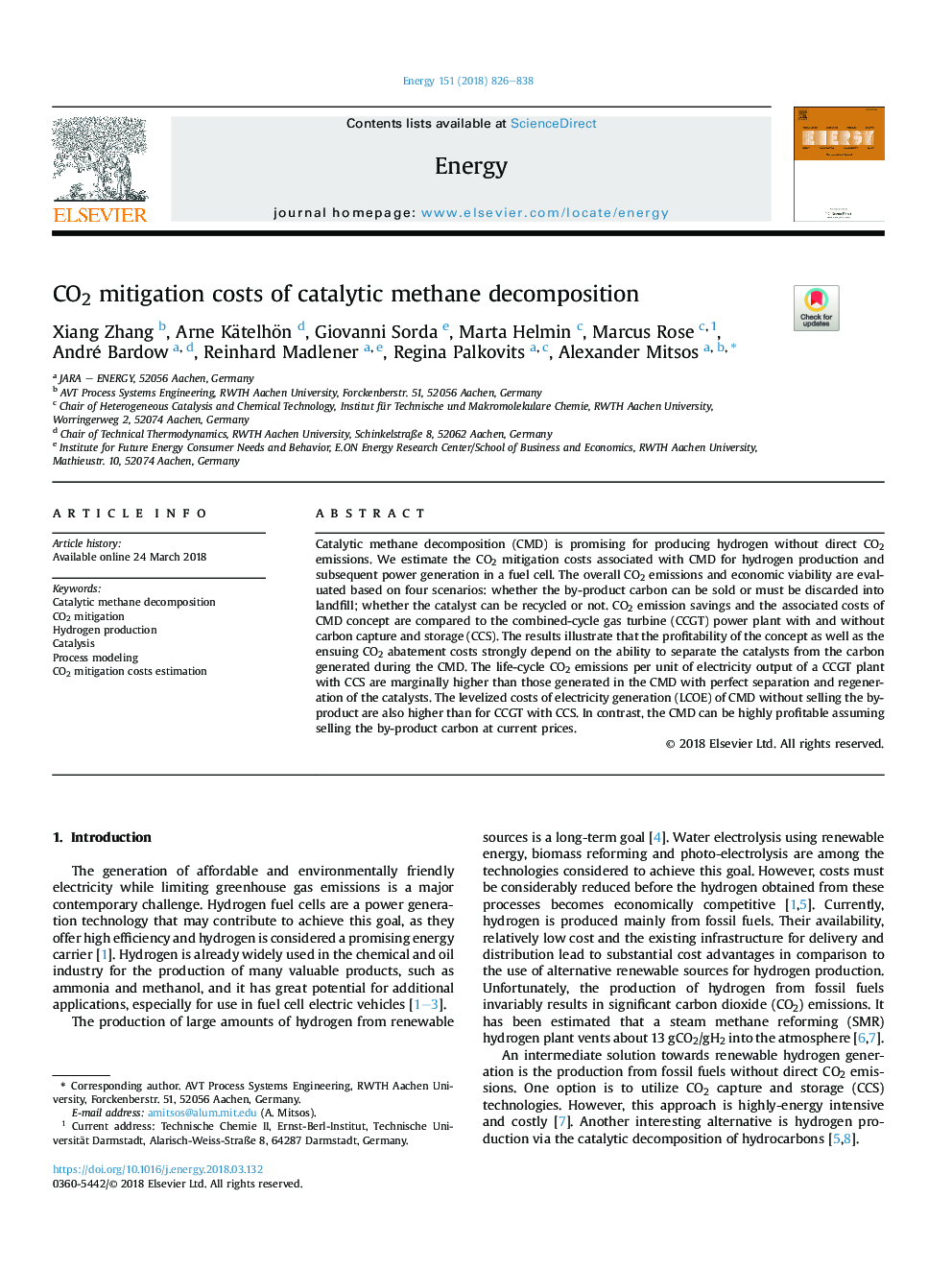| Article ID | Journal | Published Year | Pages | File Type |
|---|---|---|---|---|
| 8071790 | Energy | 2018 | 13 Pages |
Abstract
Catalytic methane decomposition (CMD) is promising for producing hydrogen without direct CO2 emissions. We estimate the CO2 mitigation costs associated with CMD for hydrogen production and subsequent power generation in a fuel cell. The overall CO2 emissions and economic viability are evaluated based on four scenarios: whether the by-product carbon can be sold or must be discarded into landfill; whether the catalyst can be recycled or not. CO2 emission savings and the associated costs of CMD concept are compared to the combined-cycle gas turbine (CCGT) power plant with and without carbon capture and storage (CCS). The results illustrate that the profitability of the concept as well as the ensuing CO2 abatement costs strongly depend on the ability to separate the catalysts from the carbon generated during the CMD. The life-cycle CO2 emissions per unit of electricity output of a CCGT plant with CCS are marginally higher than those generated in the CMD with perfect separation and regeneration of the catalysts. The levelized costs of electricity generation (LCOE) of CMD without selling the by-product are also higher than for CCGT with CCS. In contrast, the CMD can be highly profitable assuming selling the by-product carbon at current prices.
Related Topics
Physical Sciences and Engineering
Energy
Energy (General)
Authors
Xiang Zhang, Arne Kätelhön, Giovanni Sorda, Marta Helmin, Marcus Rose, André Bardow, Reinhard Madlener, Regina Palkovits, Alexander Mitsos,
